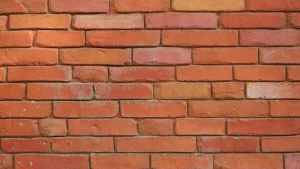What is Diverticular disease?
Diverticular disease (also diverticulosis) is a condition in which the bowel (large intestine) forms small pouches (diverticula) that bulge outward through the bowel wall. This typically develops due to increased pressure in the bowel, weakness of the bowel wall, or from straining during bowel movements. Many people with diverticular disease have no symptoms, or symptoms that are not very troublesome.
Some people with diverticular disease experience constipation, diarrhea, and low belly pain. More troublesome symptoms are sometimes the result of infection or inflammation in these pouches (diverticulitis). The symptoms of infection may come on quickly and include blood in the stool and fever. Treatment is only required in people who experience symptoms. This may involve antibiotics or, rarely, surgery.
Symptoms
Many people with the diverticular disease do not have symptoms until they develop diverticulitis. Typical symptoms include changes in bowel habits (alternating diarrhea and constipation), bloating, nausea, vomiting, and belly pain. If the diverticula are infected and inflamed, they may cause fever, belly pain, and blood and pus in the stool. Symptoms are due to inflammation, irritation, and sometimes infections forming in the out-pouching of the bowel.
Diagnosis
The diagnosis is usually made on the basis of medical history and physical examination. A computed tomography (CT) scan may be needed to identify the location of the inflammation in the bowel and confirm the diagnosis.
Treatment
Treatment is based on the severity and stage of diverticular disease. Affected people with no symptoms usually do not need treatment. People who have diverticulitis (infection and inflammation of the pouches) may receive antibiotics to treat the infection. In severe or complicated cases, surgery might be needed to stop bleeding, drain pus, or even remove parts of the bowel. However, this is very uncommon.
Risks
The risk of getting the diverticular disease and diverticulitis increases with age, and most commonly affects people older than 60 years of age. Eating a low-fiber diet (a diet high in processed foods) has often been seen as a cause, although the link is not clear.
Prognosis
Many people with the diverticular disease do not have symptoms and do not require any treatment. Diverticulitis (inflammation and infection of the pouches) is often treated with antibiotics and people recover well if there are no complications. Some people may experience recurrent episodes of diverticulitis. Younger people may have a higher risk of severe disease and recurrence.
Prevention
Eating foods that are high in fiber may help prevent diverticular disease and episodes of inflammation of the pouches (diverticulitis).
Other names for diverticulitis
- inflamed pockets in the lining of the large intestine
**What is Diverticular Disease?**
**Q: What is diverticular disease?**
**A:** Diverticular disease is a condition in which pouches (diverticula) form on the walls of the intestines. Most commonly in the sigmoid colon (left side of colon). These diverticula can become inflamed or infected, leading to various symptoms.
**Q: What causes diverticular disease?**
**A:** The exact cause is unknown, but it is believed that a combination of factors, including:
* **Low fiber diet:** Lack of dietary fiber can lead to hard stools and strain during bowel movements.
* **Age:** Over time, colon walls weaken, increasing the risk of diverticula formation.
* **Obesity:** Excessive body weight puts pressure on the colon, promoting diverticula formation.
* **Genetics:** Some individuals may have a genetic predisposition to developing diverticular disease.
**Q: What are the symptoms of diverticular disease?**
**A:** Most individuals with diverticular disease are asymptomatic. However, if the diverticula become inflamed or infected (diverticulitis), symptoms may include:
* Abdominal pain (lower left quadrant)
* Constipation or diarrhea
* Alternating diarrhea and constipation
* Rectal bleeding
* Nausea and vomiting
* Bloating and gas
**Q: How is diverticular disease diagnosed?**
**A:** Diagnosis typically involves:
* **Physical examination:** Check for abdominal tenderness and other signs of inflammation.
* **Colonoscopy:** A minimally invasive procedure to visualize the colon and identify diverticula.
* **CT scan:** Provides cross-sectional images of the colon to evaluate the severity of diverticulitis.
**Q: What is the treatment for diverticular disease?**
**A:** Treatment depends on the severity of symptoms:
* **Asymptomatic:** Monitor regularly and recommend a high-fiber diet.
* **Mild-to-moderate diverticulitis:** Antibiotics, pain relievers, and a liquid diet.
* **Severe diverticulitis or complications:** Hospitalization, intravenous fluids, antibiotics, and possibly surgery.
**Q: What lifestyle changes can help prevent or manage diverticular disease?**
**A:** Preventive measures include:
* **High-fiber diet:** Consume 25-30 grams of fiber daily to soften stools and promote regular bowel movements.
* **Adequate hydration:** Drink plenty of fluids to maintain stool hydration.
* **Regular exercise:** Physical activity helps regulate bowel movements and maintain colon health.
* **Weight management:** Avoid obesity to reduce pressure on the colon.
* **Reduce smoking:** Smoking can weaken colon walls and contribute to diverticula formation.
One comment
Leave a Reply
Popular Articles







Diverticular disease is a condition in which small pouches or sacs (diverticula) develop in the walls of the large intestine (colon).